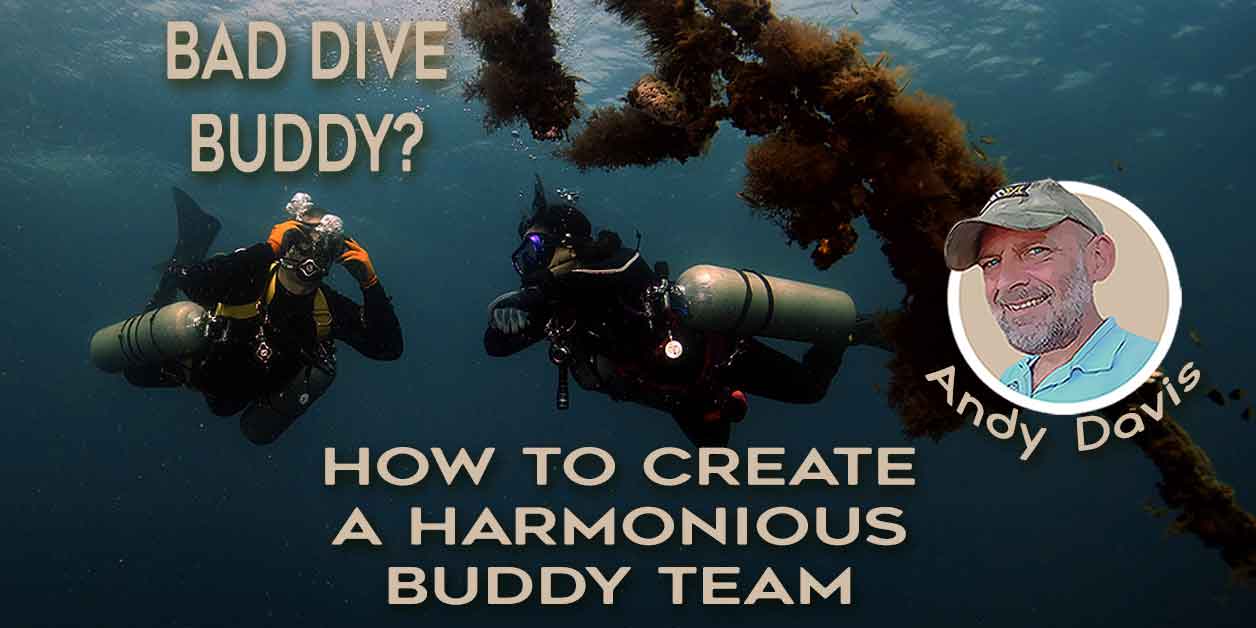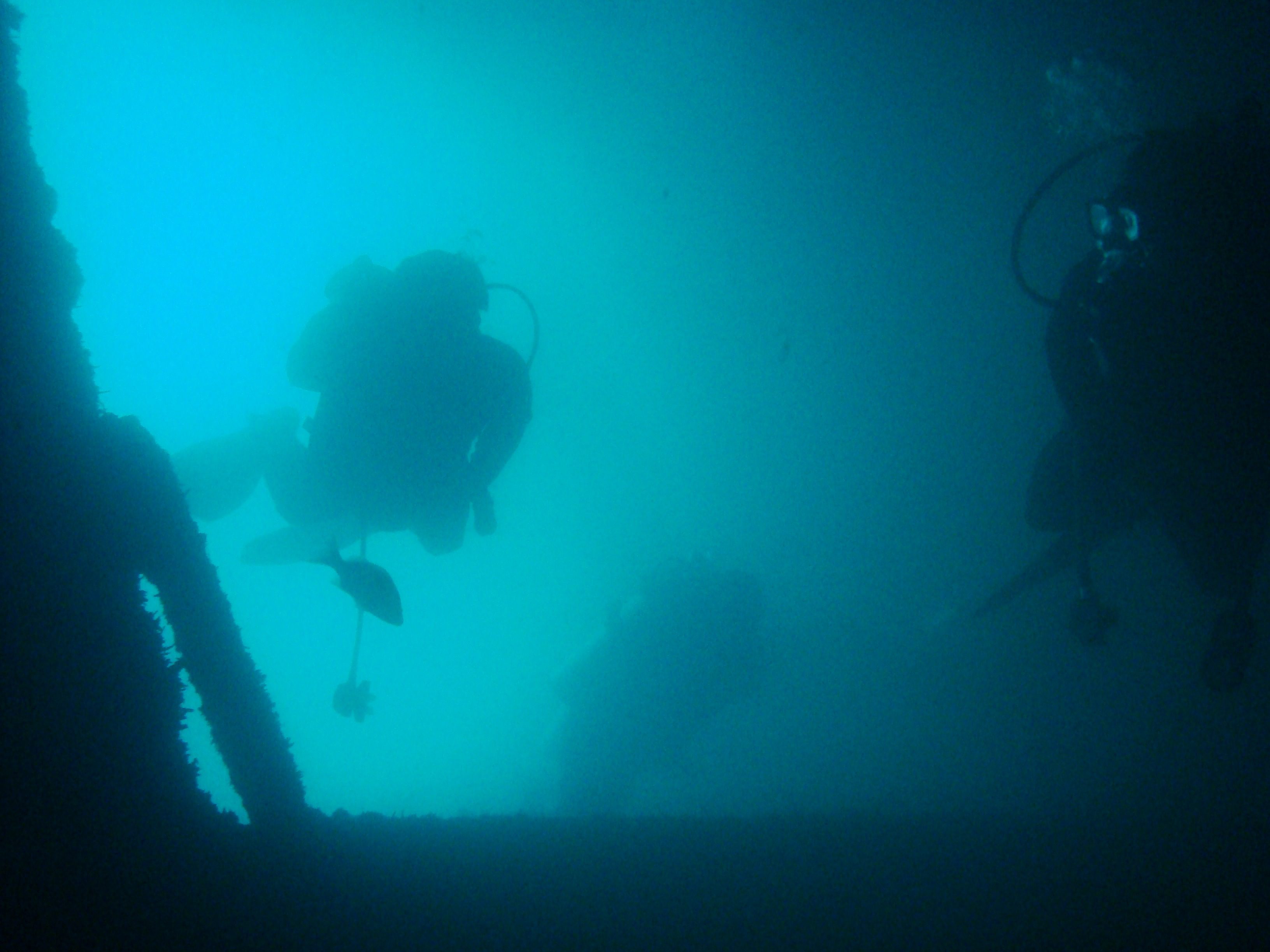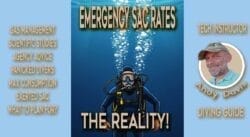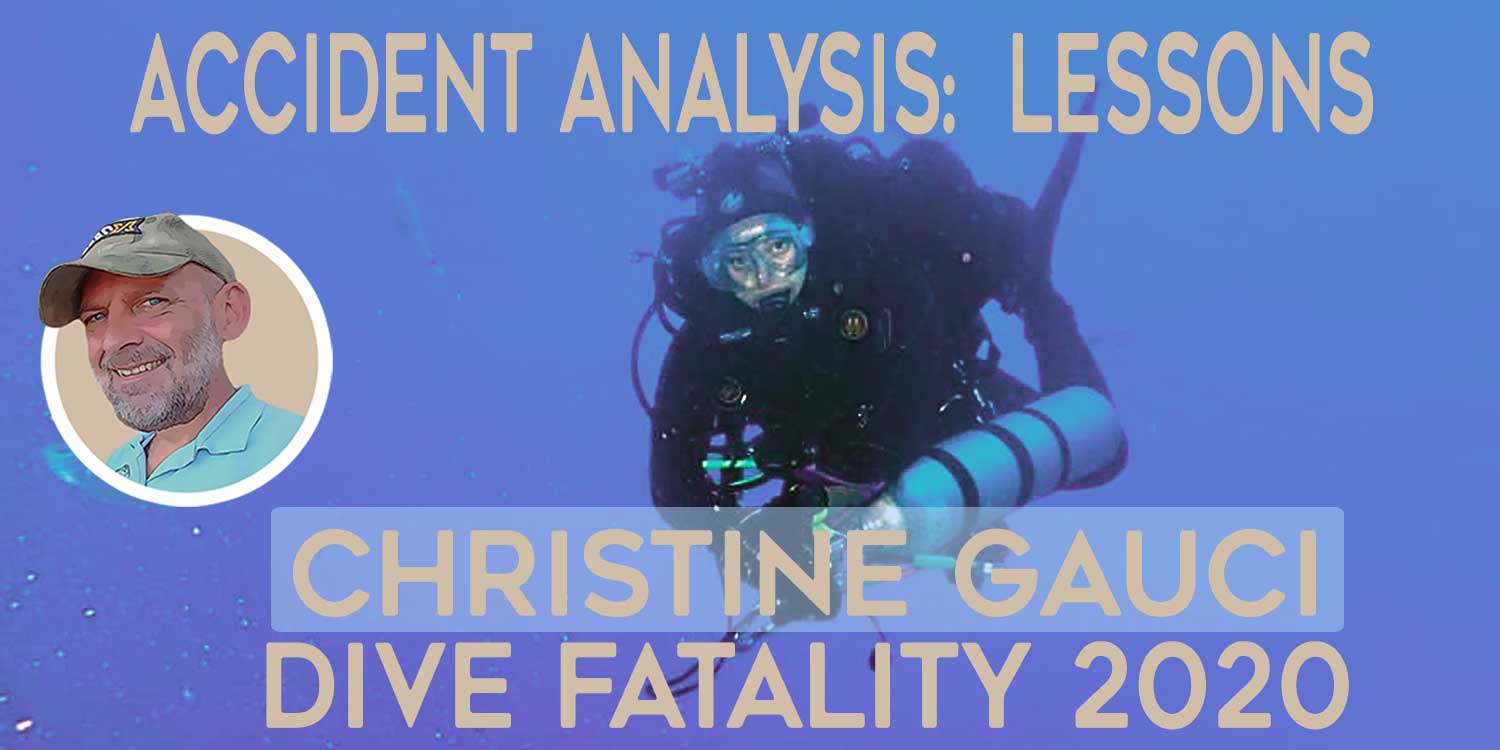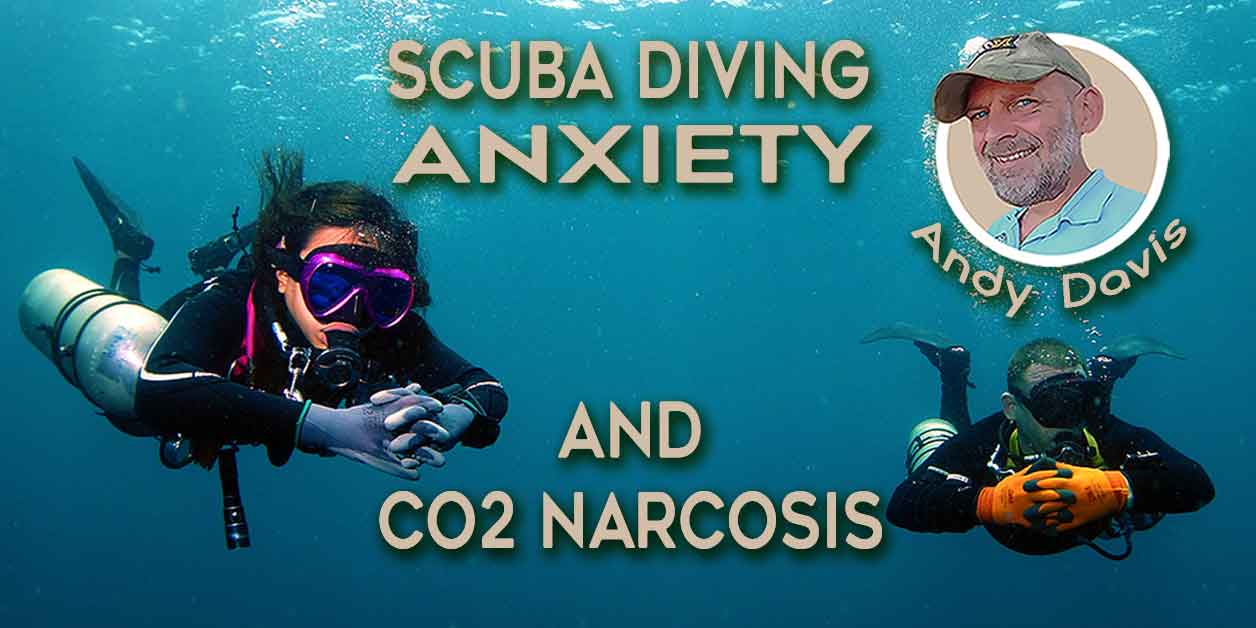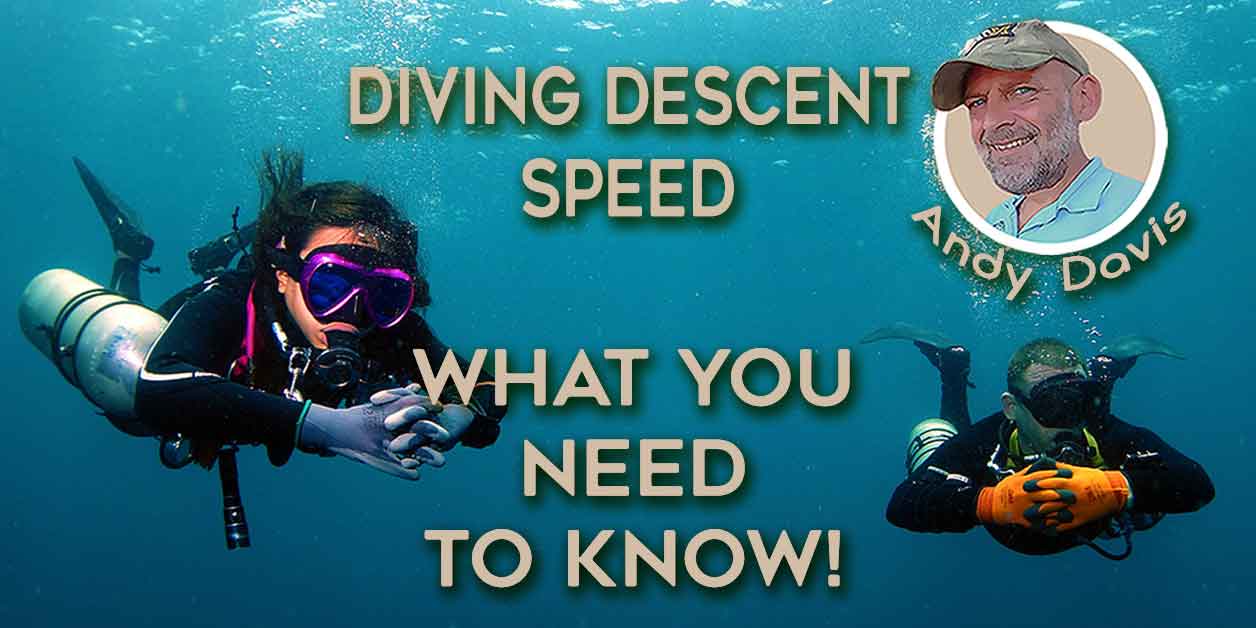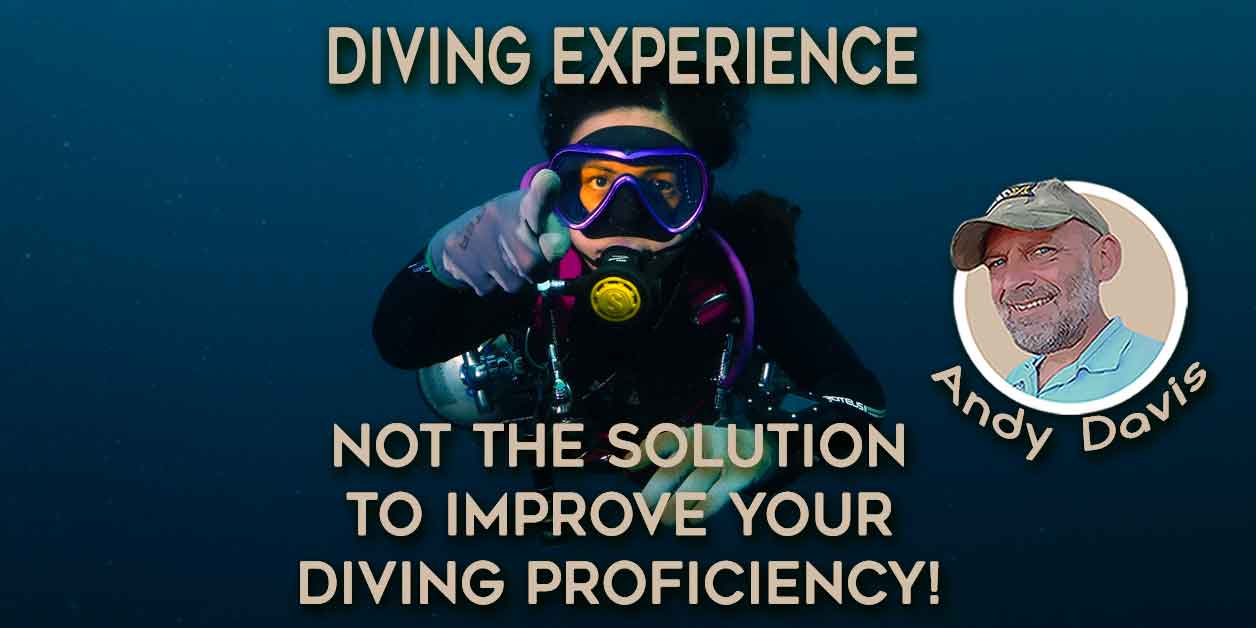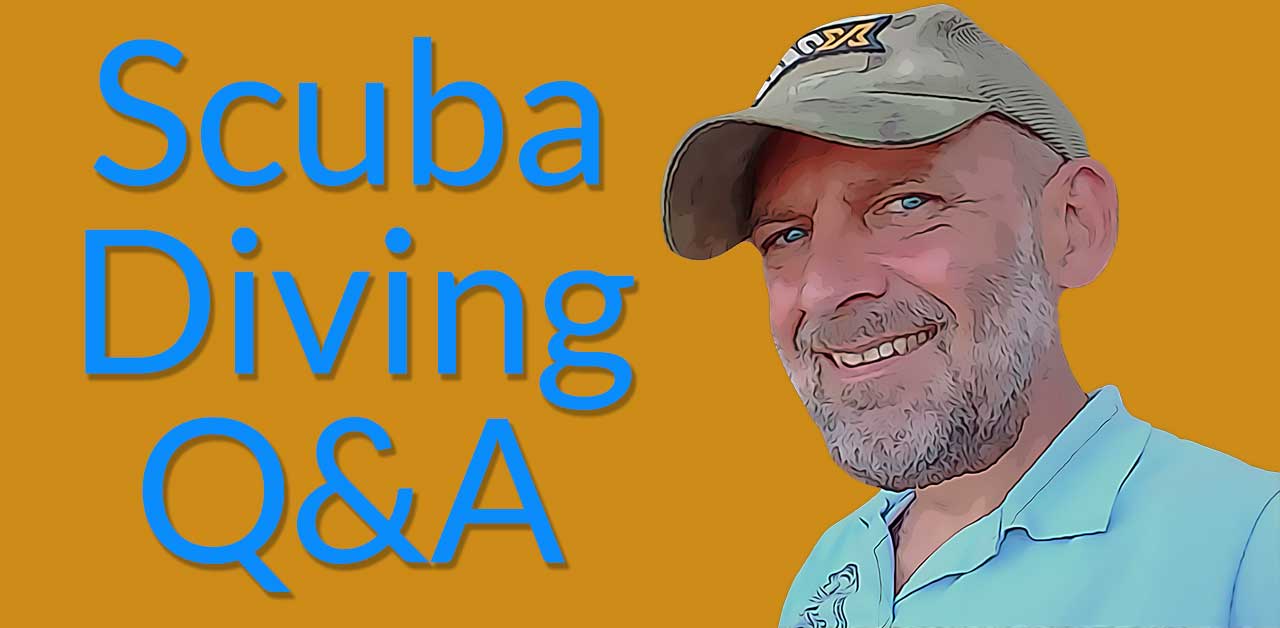What is the Difference Between Safety Stops and Decompression Stops in Scuba Diving?
The Difference Between Safety Stops and Decompression Stops in a Nutshell
A SAFETY STOP adds additional conservatism to your no-stop/NDL dive by allowing additional nitrogen off-gassing before you surface. It isn’t compulsory but is highly recommended. Safety stops can be skipped if more pressing safety factors dictate that you should surface immediately.
In contrast, a DECOMPRESSION STOP is a mandatory stop to allow sufficient nitrogen off-gassing so that you can surface without unreasonable risk of decompression illness (DCI). Essentially, you cannot surface until the decompression stop, or stops, are completed.
In short, if you miss a safety stop you have a reasonable chance of being fine. Whereas if you miss a decompression stop you have a reasonable chance of getting bent.
Recreational diving ensures that you always have immediate and direct access to the surface in the event of emergencies. As such, recreational divers are not trained or certified to conduct decompression stops.
- Dives that involve decompression stops are called TECHNICAL dives.
- The training for technical diving is far more comprehensive and demanding than what recreational divers do.
- Additionally, technical divers utilize specialist equipment, gasses, complex planning, and protocols to mitigate increased risks on their dives.
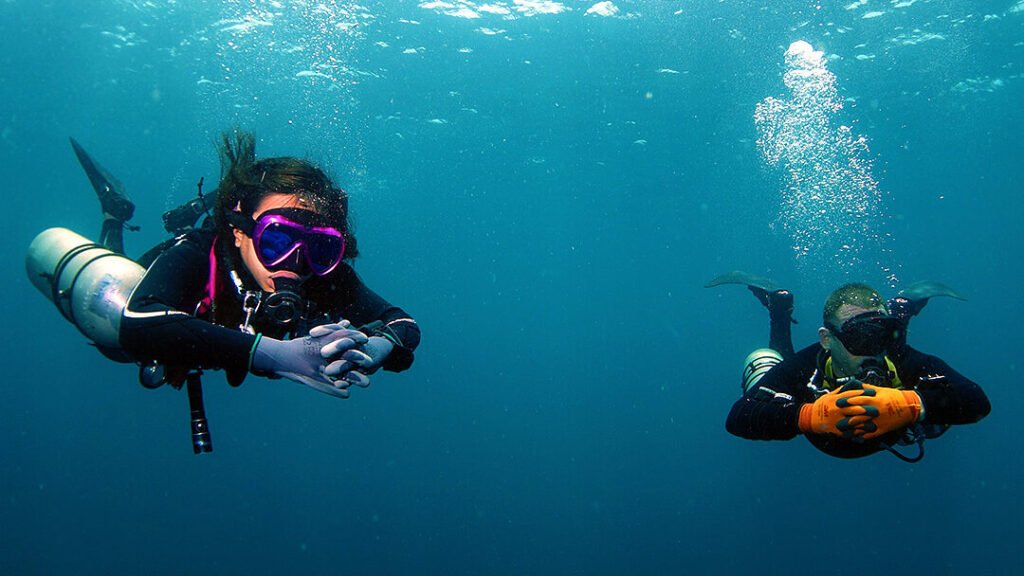
What are Safety Stops?
A safety stop is an essential and universally adopted procedure within the world of scuba diving. It’s a brief pause in shallow water during a scuba diver’s ascent to the surface following a dive.
This pause, usually performed at a depth ranging from approximately 15 to 20 feet (5 to 6 meters), is typically for around 3 minutes.
Some dive training agencies teach more complex safety stop protocols. For instance, with 3 stops at 9m (30ft), 6m (20ft), and 3m (10ft). This adds further safety from DCS, especially on deeper recreational dives.
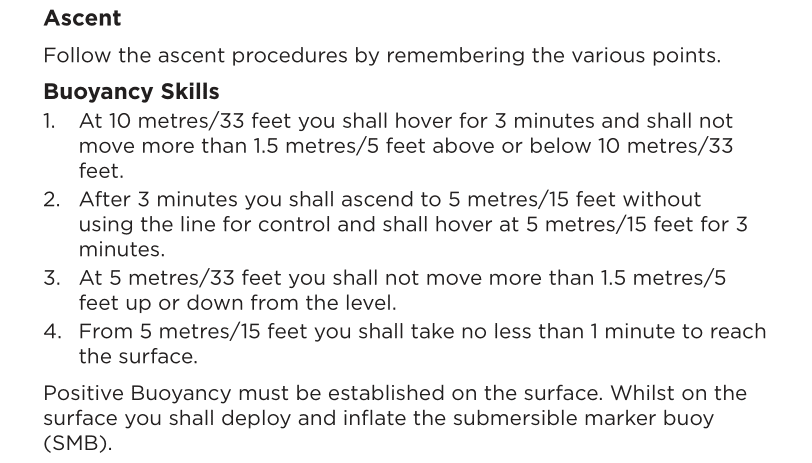
What is the purpose of safety stops?
Divers conduct safety stops to add an extra layer of conservatism by allowing the further release of nitrogen from their bodies before surfacing.
In turn, this reduces the risk of decompression sickness (DCS).
- Computer and table No-Stop (No-Deco) Limits are calculated to keep most divers safe, most of the time. They do not guarantee safety from DCS.
- Because a person’s physiology can differ from day to day, and because DCS pre-disposing factors can occur, it is very prudent to add additional conservatism beyond the no-stop/no-deco limits.
How do safety stops work?
Nitrogen absorption during a dive is inevitable and necessary, but it comes with certain risks, particularly if not managed properly.
- Ascending promptly to a shallow depth creates supersaturation of nitrogen absorbed within the body.
- Because nitrogen is at a higher pressure than the pressure surrounding your body, it is released.
- A higher pressure difference equals faster nitrogen release.
- Too much pressure difference, such as from surfacing immediately, can cause bubbles to form inside the body.
- By undergoing a safety stop, divers provide their bodies with the time needed to release nitrogen gradually, reducing the risk of decompression sickness.
Safety stops are recommended as a standard practice for all dives, irrespective of whether the dive remains within the boundaries of no-decompression limits. They offer an extra layer of precaution, safeguarding divers against potential health complications.
Are Safety Stops Mandatory?
No, safety stops are not mandatory. They are an additional layer of insulation from the risk of DCS providing that the diver has remained within their no-stop/no-deco limits on the dive.
Divers should not conduct safety stops when more pressing, safety-related, factors make surfacing immediately the most prudent choice.
Safety Stops Key Points:
- A safety stop is a brief halt during a scuba diver’s ascent.
- It typically occurs at a depth of 15-20 feet (5-6 meters) and lasts around 3 minutes.
- The purpose is to release additional nitrogen absorbed during the dive before surfacing.
- This can help avoid decompression sickness and other hyperbaric health issues.
- Safety stops contribute to safer and more enjoyable diving experiences.
- They are recommended for all dives, enhancing overall diver safety.
What is a Decompression Stop?
What is a decompression stop in diving?
- A decompression stop is a mandatory pause during a diver’s ascent to the surface.
- That stop allows a calculated release of inert gas from the diver’s body so that they can surface without undue risk of DCS.
- If the diver did not perform that stop, they might anticipate getting a DCS injury.
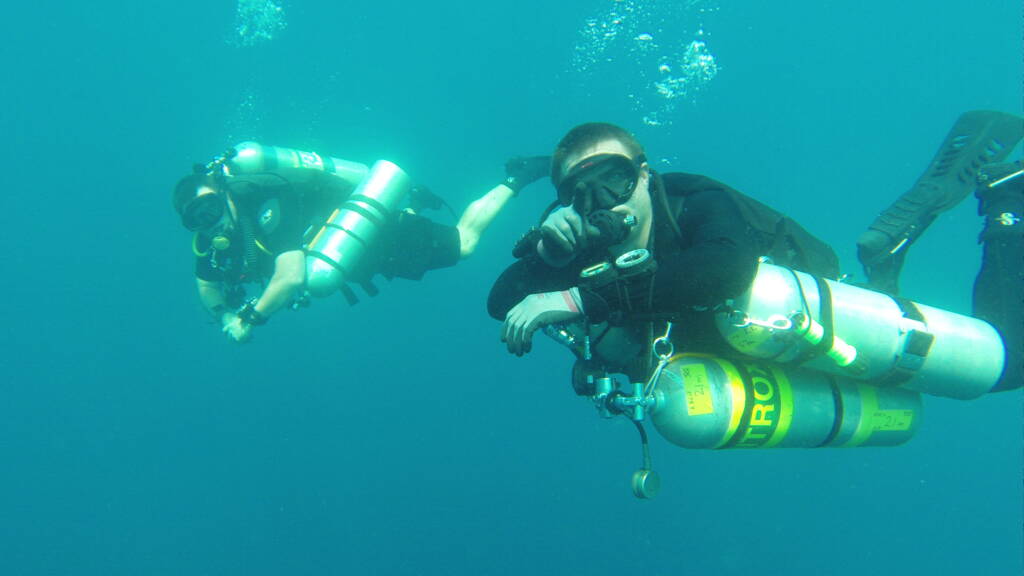
What is the purpose of decompression stops?
- The purpose of decompression stops is to allow the reduction of inert gases in the body, primarily nitrogen, and helium (if trimix gas is used).
- Decompression stops are mandatory because the diver has too much inert gas in their body to surface without an unreasonable risk of DCS.
Who can perform decompression stops?
- Decompression stops are used by technical divers.
- Technical diving demands specialized training that far exceeds normal recreational diving in complexity and challenge.
- Recreational divers are not certified to conduct decompression stops.
Why shouldn’t recreational divers go into decompression?
- Decompression stops are mandatory and the diver cannot ascent immediately to the surface should an emergency arise.
- Recreational divers are neither trained nor equipped to handle emergencies without immediately surfacing.
- If there is an equipment failure, such as a regulator freeflow, or a diver runs out of gas, not completing the decompression stop/s creates a high risk of DCS injury.
- Safely planning decompression stops is more complex than simplistically exceeding the no-stop/no-deco limit on a dive computer (emergency decompression).
What training is needed to do decompression stops?
- Technical divers receive very advanced training in decompression procedures and techniques.
- Because decompression stops are considered mandatory, the diver must be able to handle any problem that arises without surfacing.
- Immediate ascent to the surface is not possible, so the diver must have an accomplished skill level, along with sophisticated dive gear, to keep themselves safe.
- Technical divers are trained to plan dives in meticulous detail to mitigate and manage foreseeable risks. This includes contingency planning, gas management, protocols for gear failures, and drilling emergency skills to an ingrained level.
What is an accelerated decompression stop?
- An accelerated decompression stop is a practice where divers utilize O2-rich breathing gasses (deco gasses) to increase the rate of inert gas removal from their bodies.
- Accelerated decompression reduces the amount of time that the technical diver has to spend performing decompression stops on their ascent.
- Typical decompression gasses include; 50%, 80%, and 100% oxygen.
- Recreational nitrox divers are not certified to use mixtures above 40% oxygen.
What equipment is needed to do decompression stops?
Decompression stops prevent the diver from immediately surfacing. Therefore, redundant dive gear is needed so that any equipment failures can be managed.
- Redundant gas systems (backmount doubles or sidemount)
- Decompression cylinder/s with an appropriate deco gas
- Redundant computers and/or bottom timers
- A decompression plan on a slate or in wetnotes (waterproof notebook)
In summary, decompression stops are critical safety measures in diving, requiring proper training, equipment, and adherence to calculated depths and durations for safe off-gassing of inert gases accumulated during the dive.
Don’t All Dives Involve Decompression?
You may hear that all scuba dives involve decompression, and this is true.
- Even on recreational no-stop/no-deco dives, the diver is performing decompression by adhering to a defined ascent rate as they move towards the surface.
- Dive computers and tables calculate nitrogen release based upon adhering to a stated ascent rate; usually 9-10m/min (29-32ft/min)
- No-stop limits take that nitrogen release during ascent into account.
- Importantly, decompression during a continuous ascent allows direct access to the surface.
- “Decompression diving” is when there is too much nitrogen in the body to be released during a continuous ascent. Pre-planned stops are necessary.
Understanding Safety Stops Versus Deco Stops
In conclusion, grasping the differences between safety stops and decompression stops is pivotal for a safe and enjoyable scuba diving experience.
- While both serve the purpose of managing inert gas levels in the body, they differ in terms of necessity.
- Safety stops are precautionary measures taken during ascent to off-gas nitrogen, within no-stop limits, increasing DCS protection before surfacing.
- On the other hand, decompression stops are mandatory halts at calculated depths that allow the body to release absorbed gases, to avoid a likely risk of decompression sickness.
By comprehending these important nuances, divers can make informed decisions, adhere to recommended procedures, and enhance their overall safety underwater.
Remember, knowing when and why to implement each type of stop can make all the difference in keeping yourself a bend-free diver.
About The Author

Andy Davis is a RAID, PADI TecRec, ANDI, BSAC, and SSI-qualified independent technical diving instructor who specializes in teaching sidemount, trimix, and advanced wreck diving courses.
Currently residing in Subic Bay, Philippines; he has amassed more than 10,000 open-circuit and CCR dives over three decades of challenging diving across the globe.
Andy has published numerous diving magazine articles and designed advanced certification courses for several dive training agencies, He regularly tests and reviews new dive gear for scuba equipment manufacturers. Andy is currently writing a series of advanced diving books and creating a range of tech diving clothing and accessories.
Prior to becoming a professional technical diving educator in 2006, Andy was a commissioned officer in the Royal Air Force and has served in Iraq, Afghanistan, Belize, and Cyprus.
In 2023, Andy was named in the “Who’s Who of Sidemount” list by GUE InDepth Magazine.
Purchase my exclusive diving ebooks!
Originally posted 2023-08-21 14:56:43.







